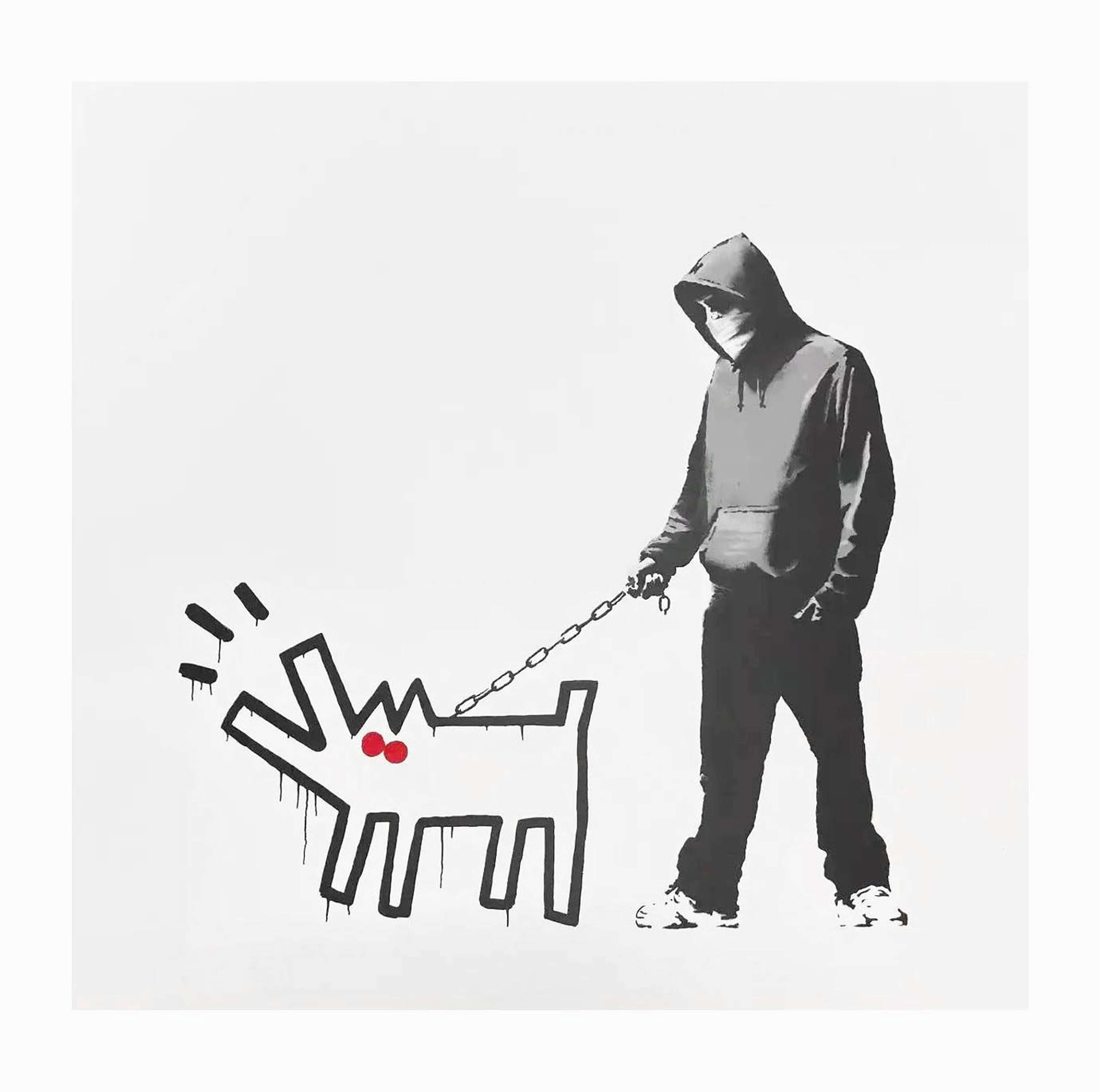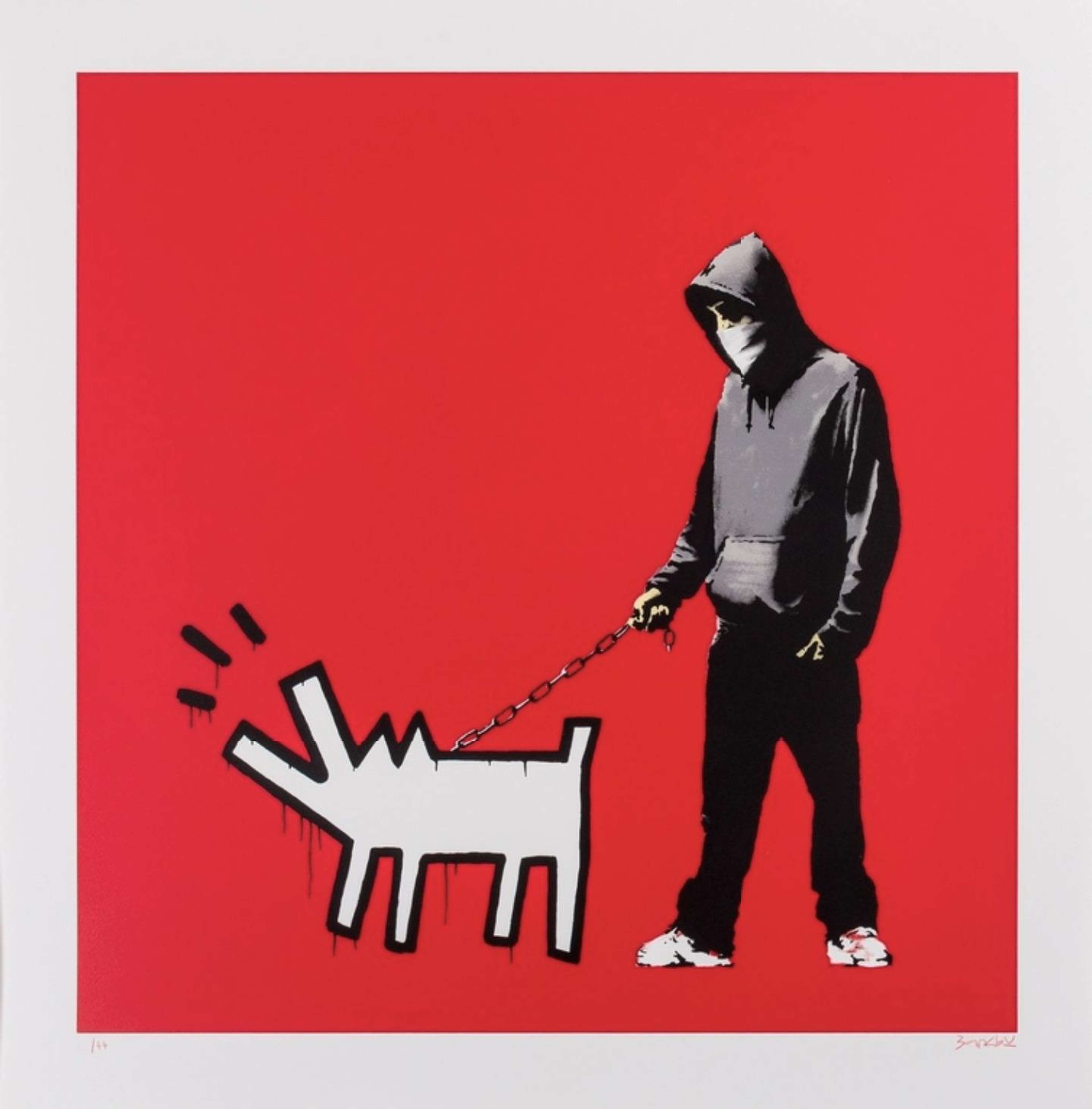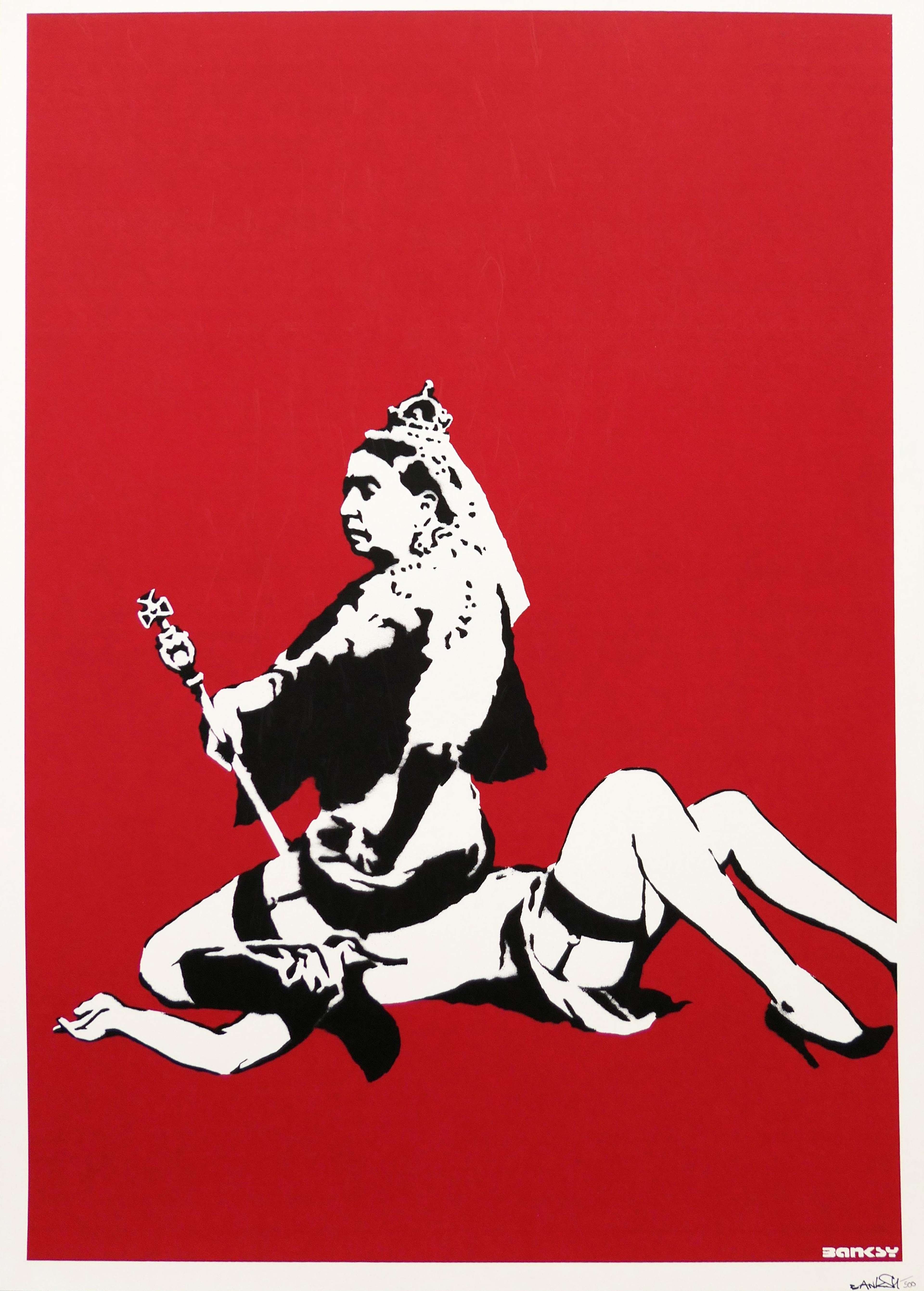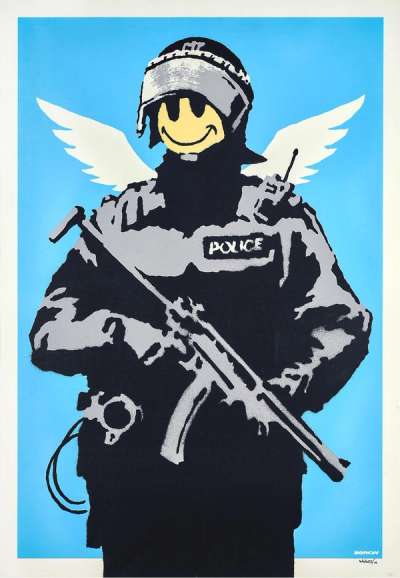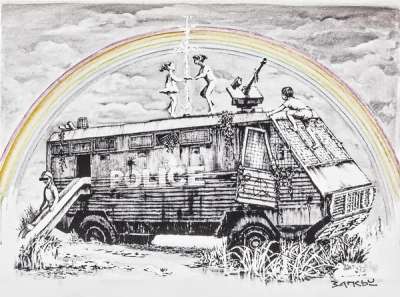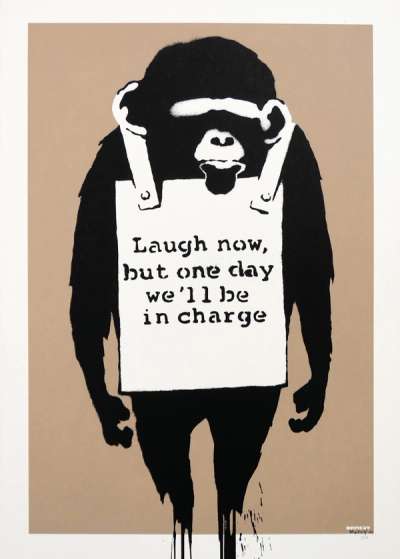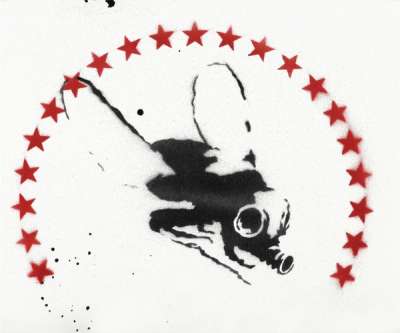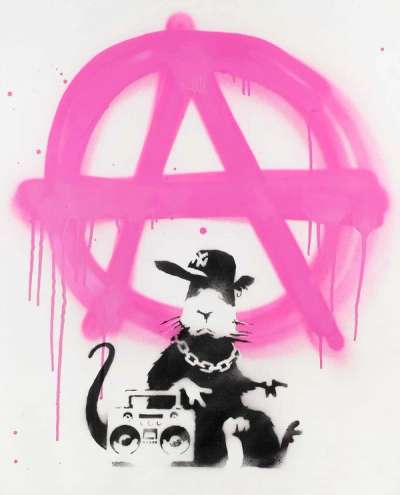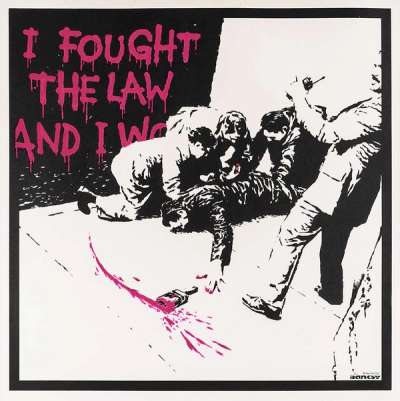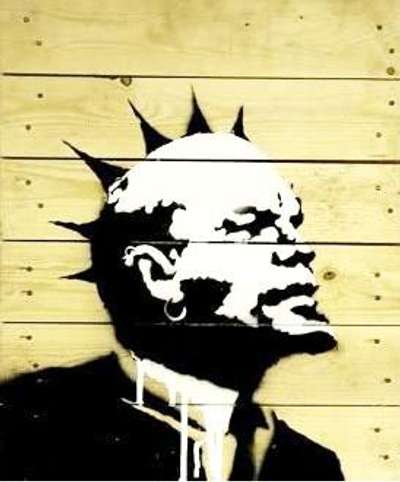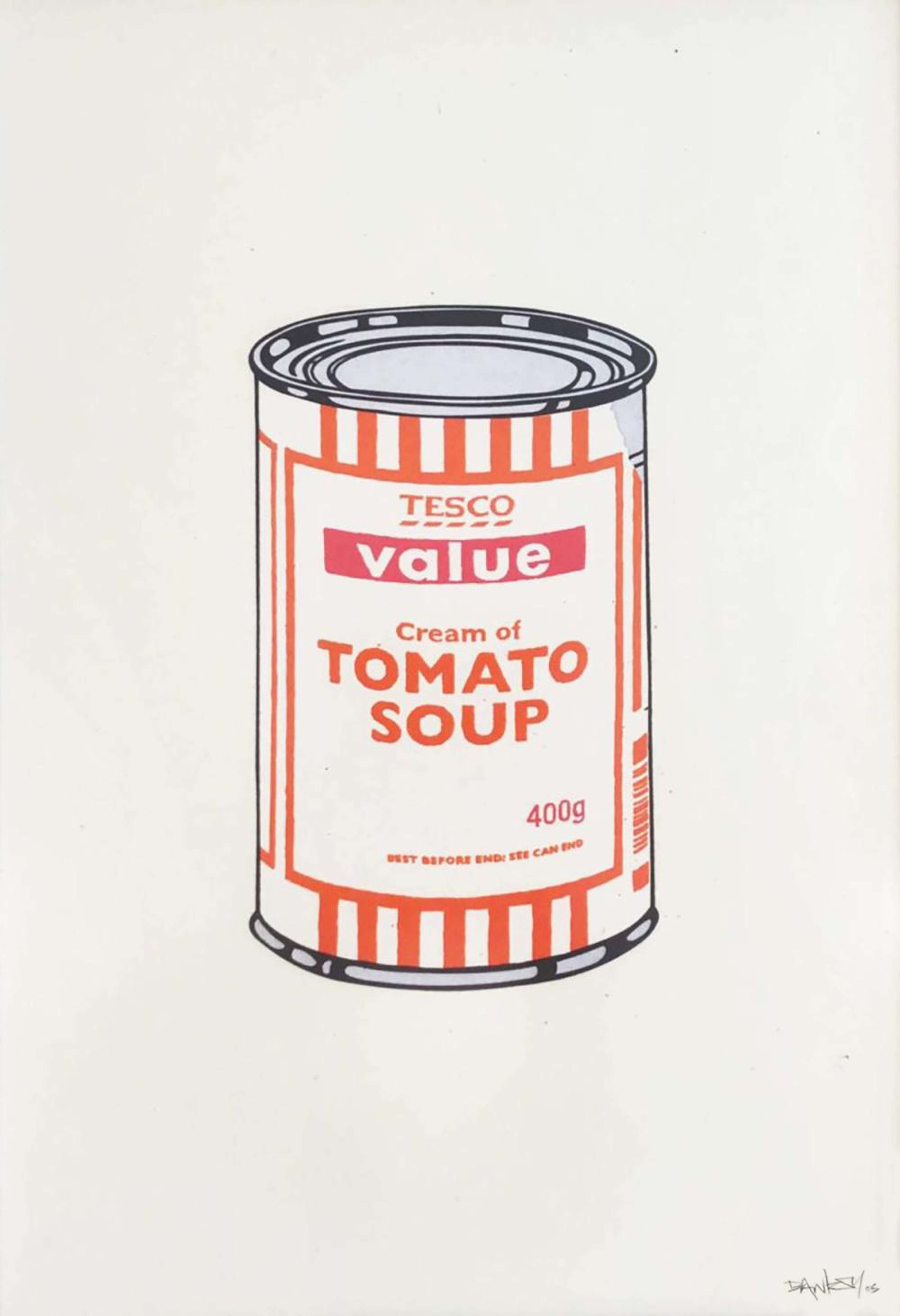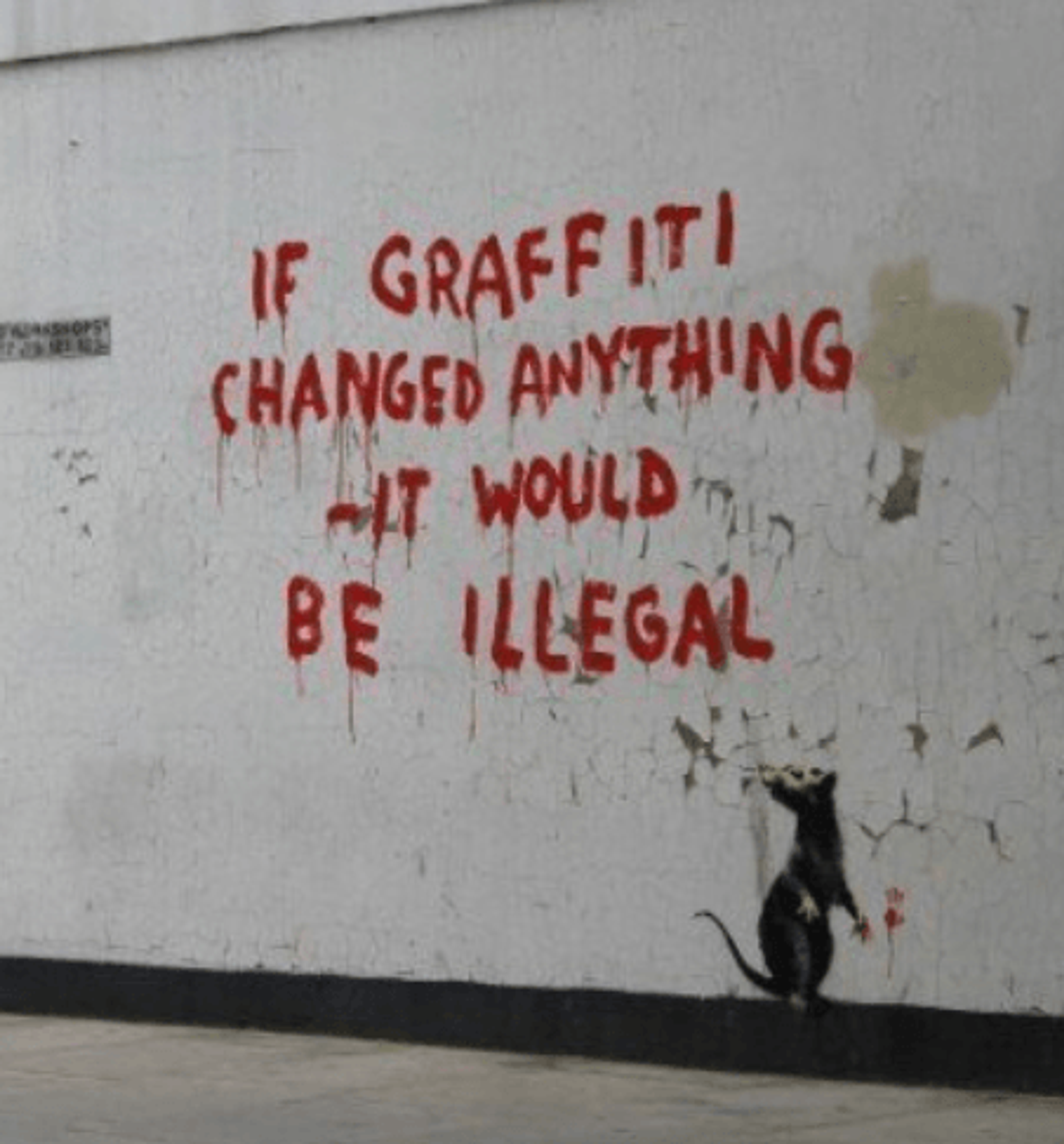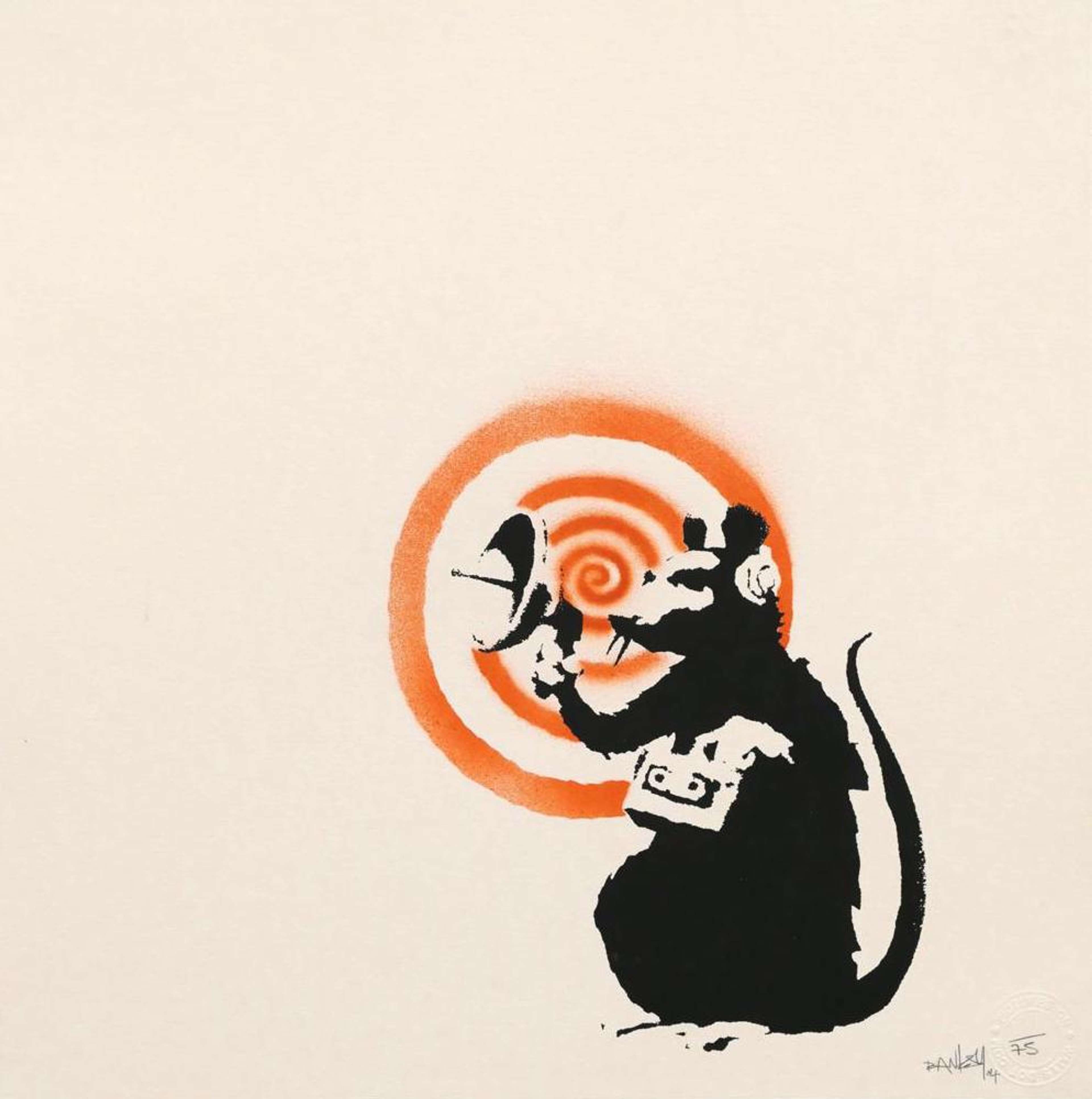Tracing the Roots of Street Art: How Blek le Rat Inspired Banksy and the Question of Originality

 Welcome To Hell (red) © Banksy 2004
Welcome To Hell (red) © Banksy 2004
Banksy
266 works
Key Takeaways
The pioneer of stencil graffiti, Blek le Rat introduced bold socio-political commentary through intricate street art that reshaped urban spaces in Paris. Banksy, who rose to fame decades later, openly acknowledges Blek’s influence, sparking debates surrounding originality and imitation within street art; a medium known for adaptation and public dialogue. Despite similarities in technique and themes, Blek’s symbolic focus contrasts with Banksy’s overtly confrontational style. Their relationship highlights the complexities of influence, originality, and legacy in contemporary art.
Street art is a medium characterised by innovation, social commentary and defiance, transforming urban landscapes into unique canvases. While Banksy is perhaps the most recognised name in street art, he has openly acknowledged the profound impact that Blek le Rat has had on his work. Banksy’s similarity to the French artist’s work has sparked an ongoing debate about originality and influence in a medium that thrives on public visibility and shared commentary.
Blek le Rat: The Pioneer of Stencil Graffiti
Early Life and Artistic Beginnings
Born Xavier Prou in 1951, Blek le Rat grew up in Paris and enrolled as a student at the École nationale supérieure des Beaux-Arts, where he studied etching, lithography, screenprinting and urban architecture. This education deeply informed his approach to street art, his knowledge of architecture playing a pivotal role in his artistic evolution, and he began to view the city not just as a space to inhabit, but as a canvas awaiting creative expression. Blek also claims he greatly admires the work of David Hockeny, who held an exhibition near Blek’s school in the early 1970s, and states, “his work is the most impressive thing I had ever seen in my life.”
The Birth of Stencil Art
Often lauded ‘The Father of Stencil Art’, Blek le Rat was inspired by New York’s street art during a trip in 1971. Though street art was still in its infancy, the bold, expressive style and unfiltered socio-political commentary of American graffiti inspired Blek to begin stencilling art on the streets of Paris in the early 1980s. His choice to use stencils was both a practical and symbolic decision. The rat became his signature motif, a creature often associated with the grittiness of urban life, and the marginalised communities that inhabit it. For Blek, the rat represented both a commentary on the resistant nature of street art, spreading like rats through the city, and a symbol of those who live on society's fringes.
Stencils provided Blek with the ability to create intricate, repeatable designs quickly, allowing him to minimise his time on the streets and reduce the risk of arrest. This technique also enabled him to achieve a level of precision and detail that was difficult to replicate with freehand graffiti, setting his work apart and laying the foundation for what would become a global movement in street art.
 Image © Christie’s / Beggar In Paris © Blek le Rat 2006
Image © Christie’s / Beggar In Paris © Blek le Rat 2006Banksy’s Rise and the Shadow of Blek le Rat
Banksy’s Acknowledgment of Blek le Rat
As Banksy rose to fame in the late 1990s and early 2000s, he frequently cited Blek le Rat as a significant influence on his work. Banksy’s admission that many of his ideas were prefigured by Blek twenty years earlier not only highlights the depth of Blek's influence, but also underscores the complexities of originality in an art form that thrives on adaptation and reinterpretation.
Visual and Thematic Parallels
The visual and thematic similarities between the works of Blek le Rat and Banksy are striking. Both artists utilise stencils as their primary medium, a choice that allows for swift execution and bold, detailed imagery. The rat motif, central to Blek's early work, also appears in Banksy's pieces, such as Radar Rat (2004) and Welcome To Hell (red) (2004), symbolising urban decay and the resilience of the underclass.
Moreover, both artists engage in social and political commentary, using their art to challenge societal norms, and deliver accessible, thought-provoking messages. Blek began using stencils to bring attention to social issues such as homelessness and consumerism, seen in his Beggar In Paris (2006) and I Want You for Peace and Paint (2012), employing a bold and direct style that contrasted with Parisian architecture and traditional notions of art. Banksy also incorporates wit, irony, and dark humour into his street art, addressing a wide range of topics such as political corruption, war, and environmental destruction, seen in pieces such as Love Is In The Air (Flower Thrower) (2003) and Napalm (Ap, orange) (2004).
Despite these similarities, each artist interprets these elements in their unique way. While Blek le Rat often focuses on the symbolic nature of his subjects, Banksy tends to infuse his work with a sardonic wit and a more overtly confrontational tone. This distinction highlights Blek’s pioneering influence, but also how influence can lead to divergence, each artist pushing the boundaries of the medium in different directions.
 : Image © Wikimedia Commons / Sleeping Man © Blek le Rat 2008
: Image © Wikimedia Commons / Sleeping Man © Blek le Rat 2008The Concept of Originality in Street Art
The Art of Influence vs. Imitation
Street art, by its very nature, is a medium that thrives on influence, reputation, and public interaction. In a space where anonymity and impermanence reign, the question of originality becomes particularly nuanced. Blek le Rat's work laid the groundwork for the global street art movement, introducing techniques and themes that countless artists have since adopted and adapted. Banksy, while undoubtedly influenced by Blek, has taken these elements and reinterpreted them, creating internationally recognised works that resonate on a global scale and achieve impressive market prices.
The debate between influence and imitation is particularly relevant in street art, where the line between homage and appropriation can be blurry. In the case of Blek and Banksy, it can be argued that their relationship represents a dialogue between two artists who have each contributed to the evolution of the medium in their own way.
Blek le Rat’s View on Banksy
Blek le Rat's views on Banksy have evolved over time. Initially, he expressed admiration for Banksy's work, recognizing the artist's ability to bring street art into mainstream consciousness. However, Blek has also voiced frustration over the lack of recognition for his pioneering role in the development of stencil graffiti. In the documentary Graffiti Wars, Blek questions Banksy’s integrity regarding the originality of his ideas, suggesting that the British artist has not always been forthcoming about the extent of his debt to his French predecessor. This tension between the two artists underscores the broader challenges of originality in art, particularly in a field where influence is both inevitable and essential.
Career Trajectories and Lasting Legacies
Blek le Rat’s Ongoing Impact
Blek le Rat continues to be a significant figure in the street art world, though not necessarily receiving the recognition his contribution to contemporary street art deserves. His work has evolved to address pressing contemporary social issues of war, poverty and politics, seen in pieces such as Sleeping Man (2008), The Warbird (2024) and War & Peace (2024). Blek’s legacy is not only in his pioneering use of stencils, but also in his enduring commitment to using art as a tool for social change.
Banksy’s Global Fame and Market Impact
Banksy’s graffiti has achieved unprecedented levels of fame, elevating street art to new heights of public visibility and market value. His works have become cultural touchstones that transcend traditional art spaces. Banksy's art echoes the influence of Blek le Rat, but his meteoric success has also carved out its own space in the global art landscape, becoming a phenomenon that both critiques and capitalises on the art world.
The enduring debate surrounding the originality of art is particularly poignant in the case of Blek le Rat and Banksy. While Banksy’s global success has brought street art into the mainstream, Blek le Rat played a foundational role in shaping this movement and style of art. Their works, though similar in technique and theme, offer unique interpretations that reflect their distinct artistic voices. This interplay between influence and innovation highlights the complexity of originality in art. Ultimately, the legacies of both Blek le Rat and Banksy demonstrate that while art may often build upon what came before, it is the unique perspectives and interpretations that truly define an artist's contribution to the cultural landscape.







